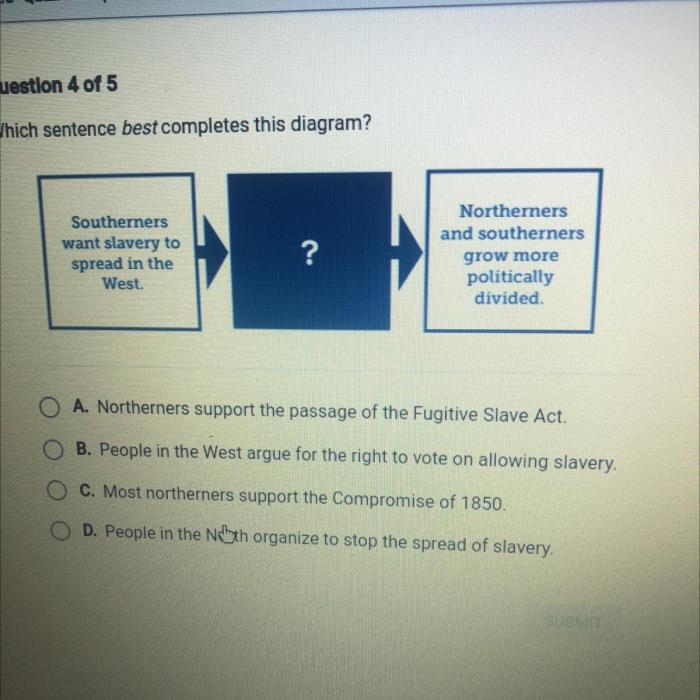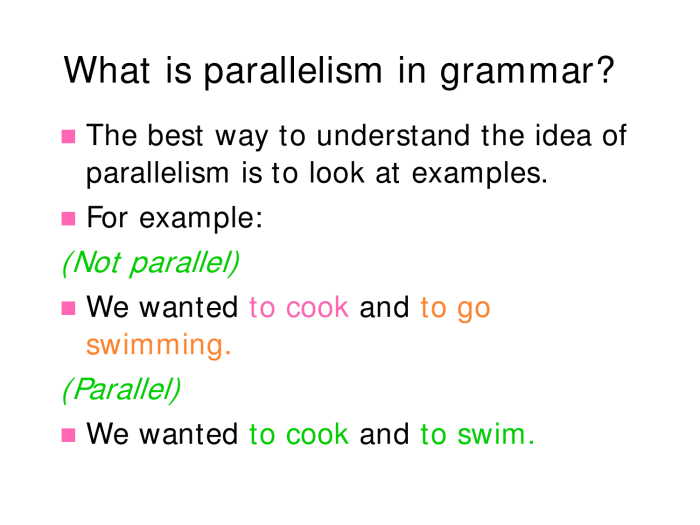Which clause completes the sentence by creating parallelism? This intriguing question sets the stage for a comprehensive exploration of parallelism in sentence structure. Parallelism, a powerful literary device, enhances clarity, emphasizes key ideas, and adds a touch of elegance to written communication.
This article delves into the concept of parallelism, its types, and techniques for incorporating it into sentences, providing a thorough understanding of its benefits and applications.
Parallelism in Sentence Structure: Which Clause Completes The Sentence By Creating Parallelism

Parallelism is a grammatical technique that involves using similar grammatical structures to create balance and emphasis in sentences. By using parallel structure, writers can enhance the clarity, readability, and impact of their writing.
Types of Parallelism, Which clause completes the sentence by creating parallelism
There are several types of parallelism, including:
- Grammatical parallelism:Using the same grammatical structure for multiple elements in a sentence, such as nouns, verbs, or phrases.
- Semantic parallelism:Using words or phrases that have similar meanings or refer to the same concept.
- Syntactic parallelism:Using the same word order or sentence structure for multiple elements in a sentence.
Creating Parallelism in Sentences
To create parallelism in sentences, writers can use techniques such as:
- Using parallel structure:Repeat the same grammatical structure for multiple elements in a sentence, such as nouns, verbs, or phrases.
- Using coordinating conjunctions:Connect parallel elements with coordinating conjunctions such as “and,” “or,” and “but.”.
- Using consistent verb tense:Use the same verb tense for parallel elements in a sentence.
Identifying Parallelism in Sentences
| Sentence Structure | Type of Parallelism | Example |
|---|---|---|
| Noun, noun, and noun | Grammatical | The cat, the dog, and the bird are all pets. |
| Verb, verb, and verb | Syntactic | She ran, jumped, and danced with joy. |
| Adjective, adjective, and adjective | Semantic | The book was interesting, informative, and well-written. |
Benefits of Using Parallelism
Using parallelism in writing offers several benefits, including:
- Improved readability:Parallelism makes sentences easier to read and understand by creating a sense of balance and rhythm.
- Increased clarity:Parallelism helps to clarify the relationships between ideas and emphasize key points.
- Enhanced impact:Parallelism can create a sense of emphasis and urgency, making writing more persuasive and memorable.
Commonly Asked Questions
What is parallelism in writing?
Parallelism is a literary device that involves using similar grammatical structures to express related ideas, creating a sense of balance and rhythm in sentences.
What are the different types of parallelism?
There are three main types of parallelism: grammatical, semantic, and syntactic. Grammatical parallelism focuses on using similar grammatical structures, semantic parallelism on using words with similar meanings, and syntactic parallelism on using similar sentence structures.
How do I create parallelism in sentences?
To create parallelism, use parallel structure, coordinating conjunctions, and consistent verb tense. Parallel structure involves using similar grammatical structures for related ideas, coordinating conjunctions connect parallel elements, and consistent verb tense ensures that verbs in parallel structures agree in tense.

